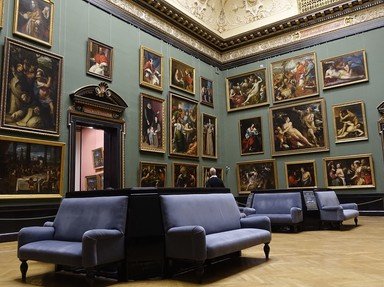Quiz Answer Key and Fun Facts
1. The image shows "Madonna of the Magnificat", one of over a dozen of his paintings at the Uffizi including "The Birth of Venus". Who is the artist?
2. Known as "Madonna and Child with two Angels", it was painted between 1450 and 1465. Which Italian Renaissance artist and Carmelite priest was the painter?
3. Which Italian Mannerist worked on this painting, "Madonna with the Long Neck", between 1534 and his death in 1540?
4. Who was the artist, a fierce rival of Michelangelo for church commissions, who produced three similar Madonna paintings - "Madonna del Cardellino" (shown), "Madonna of the Meadow" and "La belle jardinière"?
5. In 1855 British poet Robert Browning published a poem about this Italian fresco decorator and painter of altarpieces. Who was the High Renaissance painter whose "Madonna of the Harpies" (1517) is shown?
6. Dating to around 1310, "Ognissanti Madonna" (or "Madonna Enthroned") is considered by some to be the first Italian Renaissance painting. Who was the artist?
7. "Sant'Anna Metterza" is considered a joint effort by two Italian artists, one being regarded as the first great Italian painter of the Quattrocento period of the Italian Renaissance. Who was this?
8. One of five paintings titled the "Adoration of the Magi" at Uffizi, which Italian polymath was responsible for this unfinished version?
9. What symbol associated with Mary forms part of the title of this portrait by Titian?
10. To finish, another rondo. Most of the Madonnas by this artist are marble statues or relief sculptures. The "Doni Tondo" is a rare finished panel painting by the mature artist. Who was he?
Source: Author
suomy
This quiz was reviewed by FunTrivia editor
looney_tunes before going online.
Any errors found in FunTrivia content are routinely corrected through our feedback system.
